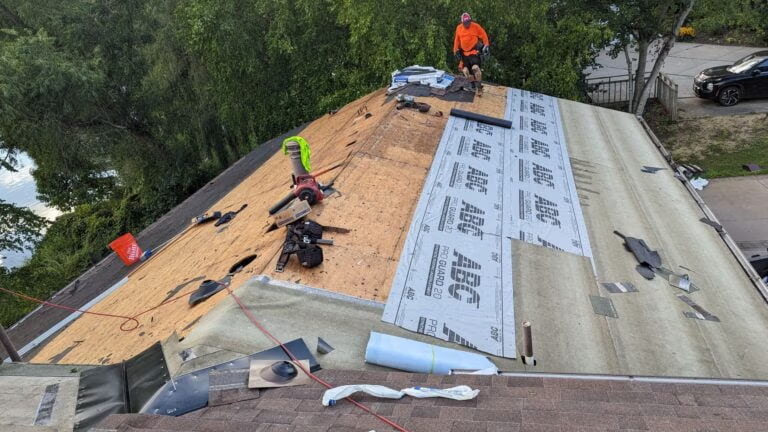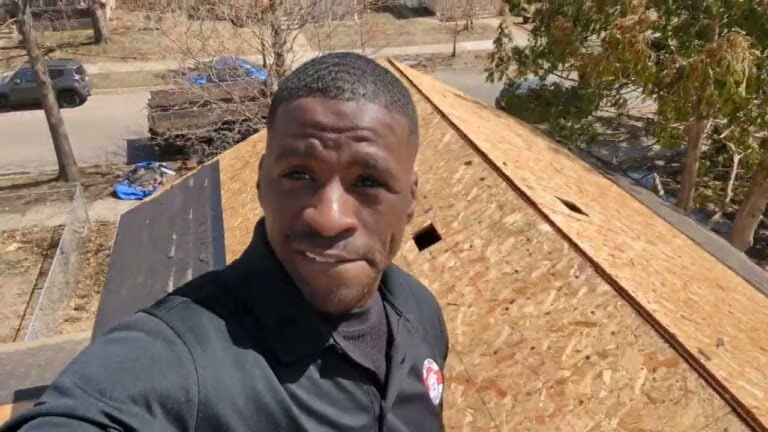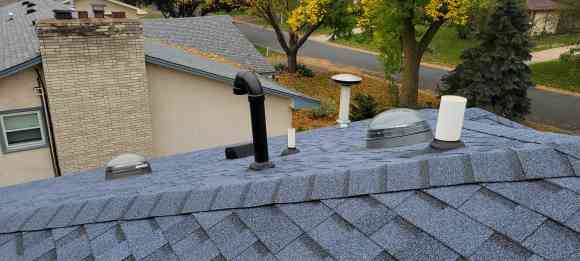[lwptoc]
When the snow starts to fall in St. Paul and the Twin Cities area, it’s time to start thinking about your roof. Snow accumulation may not seem like an immediate threat, but as it continues to build up, it gets heavier and heavier. Even a newer roof can only take so much extra weight! The question is: how much snow on your roof is dangerous? This winter, keep an eye on your roof to make sure heavy snow storms don’t ruin your home.
The danger of snow accumulation
Snow on roofs is a safety concern for multiple reasons. As the powder builds up, compacts and freezes, it gets heavier and heavier. Old homes, flat roofs and frameworks constructed with lightweight metals are particularly susceptible to snow buildups. Here’s what might happen if the buildup gets to be too much.
- Believe it or not, it only takes a few inches of snow to add hundreds of pounds of pressure to your roof! Layer after layer adds more weight, which can cause joists to sag or the roof itself to collapse. Anyone remember the Metrodome?
- Snow accumulation also leads to ice dams. Melted snow trickles down the roof and freezes once it hits lower temperatures near the gutter. Ice dams obstruct draining systems, which prevents weight from leaving the roof and leads to more strain.
- Ice may also accumulate in gutters, further preventing proper drainage. This ice can weigh down gutters and cause them to break off the roof’s edge, which leads to water intrusion inside your home, further compromising the roof’s integrity.
Factors that increase the risk of ice dams
While the weight of snow on a roof is an immediate concern, ice damming is a sneaky problem for St. Paul homeowners. Thankfully, it’s also easy to address with a little forethought.
- The structure of your roof determines how likely you are to encounter an ice dam. For instance, a flat roof makes it more difficult for melted snow to drain into the gutters.
- Water that stays on the roof longer is more prone to freezing. Flat roofs aren’t designed to handle large snow loads and are more susceptible to buckling under excessive weight.
- Ice dams will also develop if the roof has poor ventilation. When heat escapes, snow melts at the top of the roof and trickles down to where temperatures are cooler.
- Ventilation issues in the attic add more weight and make clearing your roof difficult due to all the ice.
Even if the roof was built to endure countless Minnesota blizzards, regular maintenance is necessary to avoid ice damming. It’s a smart idea to have a roofing contractor inspect your roof before winter comes to St. Paul.
Know when it’s time for snow removal
Roofs on St. Paul homes have different snow load capacities, depending on their age and design. Buildings less than 10 years old can typically endure up to 20 pounds of snow per square foot before risking damage. Ice dams have a greater density than snow and must be avoided whenever possible. Generally, a roof can handle up to:
- Four feet of fresh snow
- Two feet of packed snow
- Four inches of ice
Ice and snow add up fast. It’s worth stepping outside to inspect your roof after a heavy snow storm. Understanding the consequences of excessive snow accumulation is the first step towards protecting your home. Look for signs of stress, excess weight, ice damming and more, and call a roofing expert in St. Paul if you’re concerned.
It’s better to be proactive during the winter than reactive in the spring, when you find severe damage on your roof! Contact Sellers Roofing Company today to get your roof evaluated.





